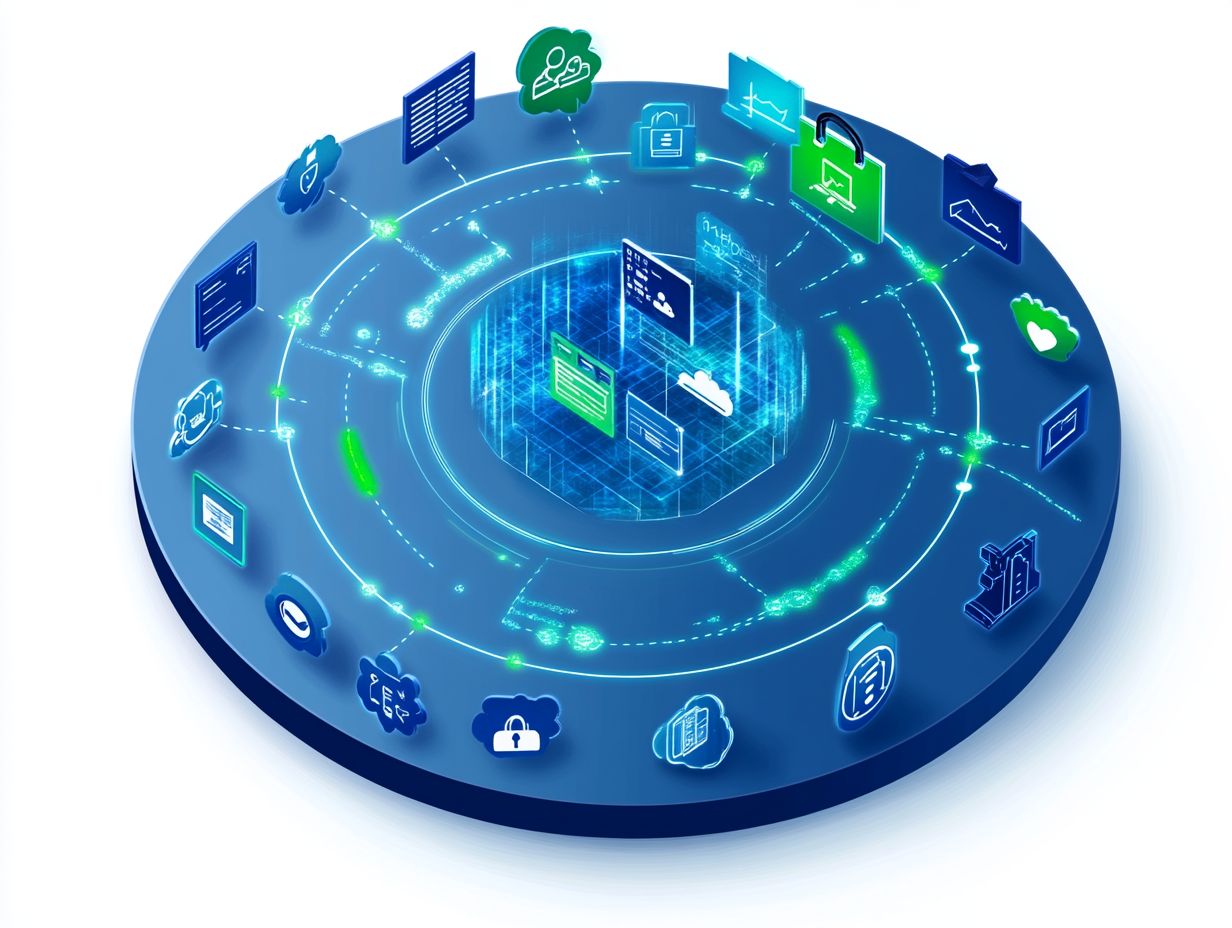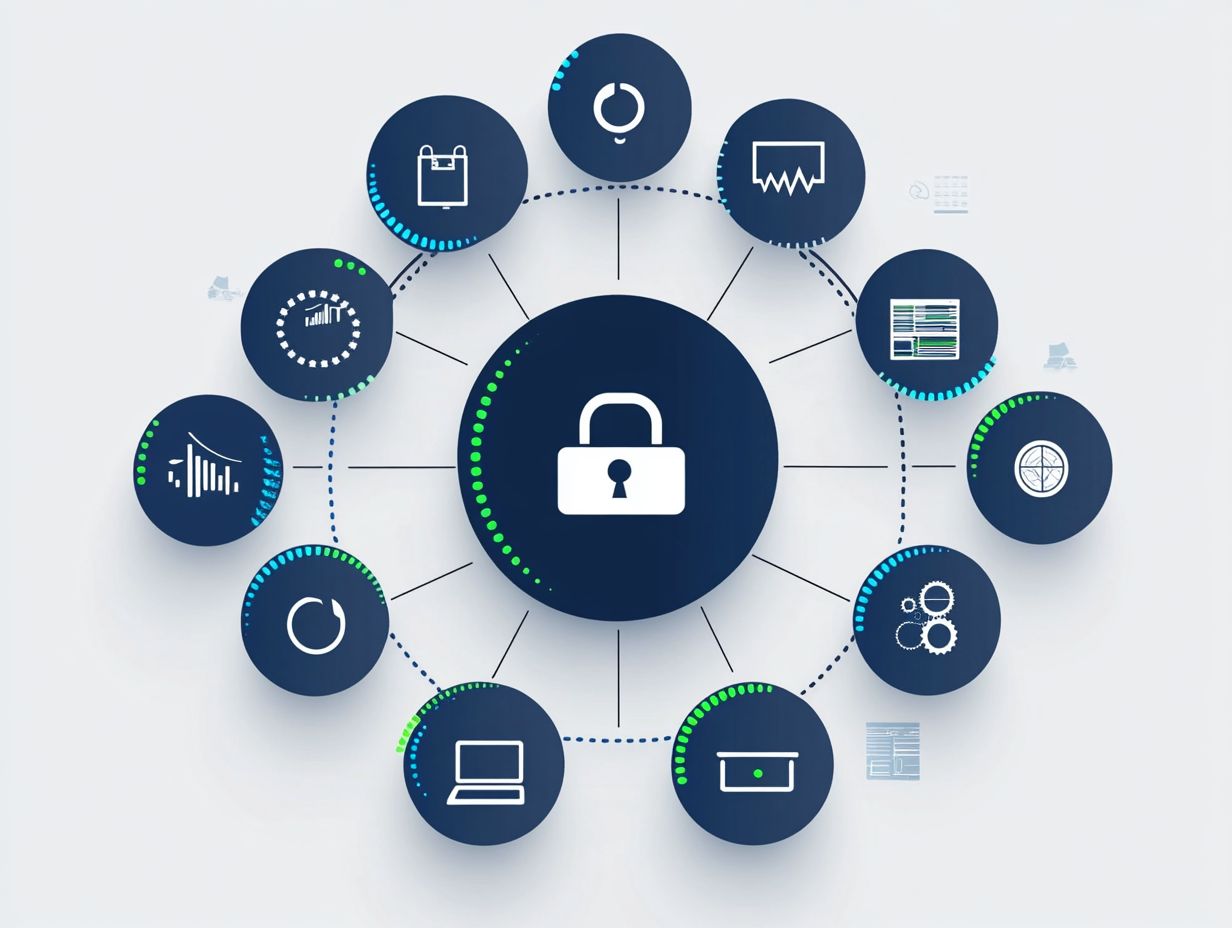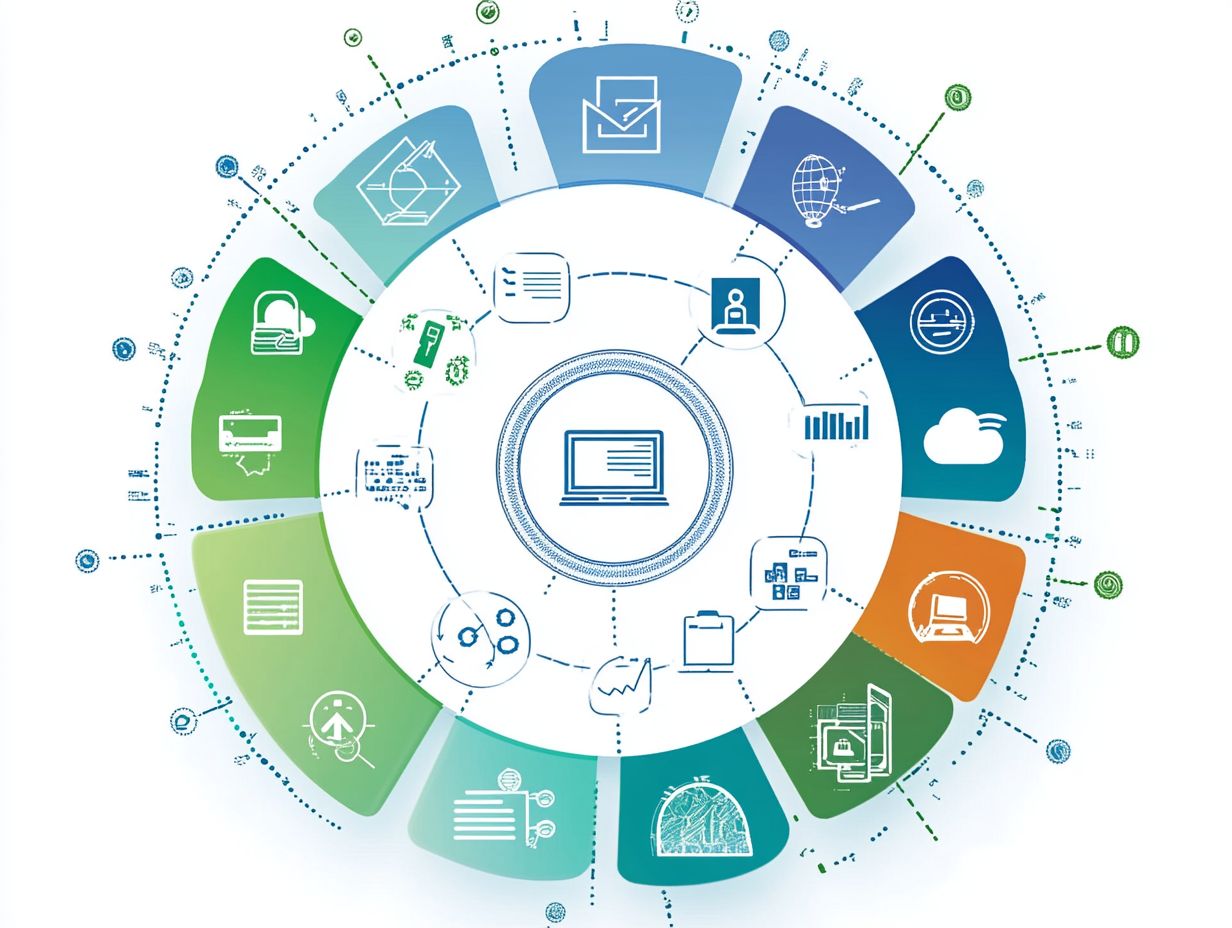Understanding the Cloud Security Lifecycle
In today s digital landscape, ensuring robust cloud security has never been more critical. As you increasingly rely on cloud services, understanding the Cloud Security Lifecycle is essential for safeguarding sensitive data and maintaining trust.
This article breaks down the stages from planning and preparation to incident response and recovery offering key considerations and best practices at each step. It also delves into emerging trends that are shaping the future of cloud security, equipping you with insights needed to navigate this dynamic environment with confidence.
Contents
- Key Takeaways:
- Stages of the Cloud Security Lifecycle
- Key Considerations for Each Stage
- Best Practices for Ensuring Cloud Security
- Future of Cloud Security Lifecycle
- Frequently Asked Questions
- What is the Cloud Security Lifecycle?
- What are the stages of the Cloud Security Lifecycle?
- Why is understanding the Cloud Security Lifecycle important?
- What are some common security challenges in the Cloud Security Lifecycle?
- How can organizations improve their Cloud Security Lifecycle?
- Best Practices for Managing Cloud Security
Key Takeaways:

Plan and prepare for cloud security by identifying potential risks and establishing clear security policies and procedures.
Ensure effective implementation and deployment of security measures by considering factors such as data encryption, access control, and regular audits.
Stay updated on emerging trends and best practices to manage and mitigate security incidents throughout the cloud security lifecycle.
Defining the Concept
Cloud security plays a pivotal role in managing secure data throughout various stages: from creation and storage to usage, sharing, archival, and destruction.
Cloud security doesn t just protect sensitive information; it also ensures compliance with vital regulations like GDPR, HIPAA, and PCI-DSS, promoting effective data management practices.
By implementing robust cloud security measures, you can navigate the complexities of managing data responsibly and securely, ensuring accurate categorization and safeguarding throughout its journey.
This involves using advanced encryption methods during data transmission and storage, establishing rigorous access controls, and maintaining continuous monitoring to detect and respond to potential threats promptly.
Adopting secure data practices significantly reduces the risks of breaches and data loss, enhancing trust among users and stakeholders alike.
As you transition toward cloud-based solutions, integrating comprehensive security strategies is paramount to maintaining data integrity, confidentiality, and availability at every stage of the data lifecycle.
Stages of the Cloud Security Lifecycle
The stages of the cloud security lifecycle provide a systematic framework for managing and securing your data effectively, covering every aspect from creation to destruction.
Each stage is vital for maintaining data integrity, availability, and confidentiality, ensuring compliance with industry standards and regulations.
1. Planning and Preparation
The first stage, Planning and Preparation, is crucial for establishing a robust framework that addresses compliance requirements while ensuring effective data management practices.
This phase lays the groundwork for identifying potential vulnerabilities and implementing strategic risk assessments. By thoroughly evaluating your cloud environment, you can define specific roles and responsibilities for your team members, fostering clear accountability.
Setting compliance requirements helps you meet regulatory standards and nurtures a culture of security awareness within your organization. Act now to align your cloud security strategies with best practices in data management, ensuring sensitive information remains protected while minimizing risks related to unauthorized access and data breaches.
2. Implementation and Deployment
Implementation and deployment mark the stage where you put your cloud security plans into action, ensuring that secure data practices are integrated and robust encryption measures are established to protect sensitive information.
During this critical phase, prioritize user access management. Ensure that only authorized personnel can interact with sensitive data. Employing multi-factor authentication and role-based access controls significantly enhances your security posture by creating layered defenses.
Regular audits and continuous monitoring are vital to identify potential vulnerabilities and maintain compliance with industry regulations.
By establishing these meticulously defined protocols, you not only protect your data but also cultivate trust among clients and stakeholders, highlighting the necessity of comprehensive cloud security measures in today s digital landscape.
3. Monitoring and Management

Monitoring and management are key stages in the cloud security lifecycle. They emphasize the need for data visibility and hygiene to detect potential threats effectively.
Employ advanced tools and strategies to enhance your ability to oversee real-time data flows. This will help you pinpoint anomalies quickly.
SIEM systems, which help track security information and events, and CASBs, which provide security for cloud services, are critical tools. Integrating these technologies allows your team to manage security proactively and respond to threats swiftly.
Strong data hygiene practices, including regular audits and vulnerability assessments, are essential. They help safeguard sensitive information and minimize risks in cloud environments.
4. Incident Response and Recovery
Incident response and recovery is the final stage of the cloud security lifecycle. You need strategies to respond quickly to security breaches and ensure effective data recovery.
A comprehensive incident response plan is essential for a resilient security framework. Key steps typically include:
- Preparation
- Detection
- Analysis
- Containment
- Eradication
- Recovery
Each phase helps you identify threats, mitigate damage, and restore normal operations promptly.
Best practices for securing data post-incident include:
- Conducting thorough post-incident reviews to learn from breaches.
- Updating security policies based on new insights.
- Training all team members to recognize signs of potential threats.
By focusing on these elements, you can protect your data and boost your preparedness for future incidents.
Key Considerations for Each Stage
Understanding key considerations for each stage of the cloud security lifecycle is crucial for your organization. It gives you the power to manage your data effectively while meeting compliance requirements.
Factors to Keep in Mind
When evaluating cloud security measures, consider data classification and user access controls. These are fundamental for managing and securing sensitive data efficiently.
Implement robust data classification protocols to categorize your data based on sensitivity. This enables you to apply appropriate security measures.
Effective user access controls reduce the risk of data breaches and enhance compliance with regulations. They create a layered defense against potential threats.
By focusing on detailed classifications and controlled access, you create a safer cloud environment. This is vital for maintaining the integrity and confidentiality of your valuable data.
Best Practices for Ensuring Cloud Security
Establishing best practices for cloud security is essential for any organization. These practices help maintain secure data management and uphold compliance with industry standards.
Prioritizing these practices safeguards your data and reinforces trust with stakeholders and customers.
Tips for Effective Implementation

For effective cloud security implementation, prioritize encryption. Ensure comprehensive data visibility to protect sensitive information. This dual approach safeguards your data during transit and at rest. It also enables you to monitor your cloud environments in real time.
Utilizing encryption protocols like AES-256, which is a strong method for encrypting data, significantly enhances your data protection strategies. Implementing visibility tools provides valuable insights into user activities and potential vulnerabilities. This allows you to adopt a proactive stance against threats.
Choose cloud service providers that truly prioritize your security. Regularly audit their security frameworks to help establish a robust defense against unauthorized access.
Future of Cloud Security Lifecycle
The future of the cloud security lifecycle is on the brink of transformation. Emerging trends and technologies will redefine how you approach data security and compliance.
Embracing these advancements will empower you to enhance your organization’s security posture. You will navigate the complexities of compliance with greater confidence.
Predictions and Emerging Trends
Predictions for cloud security indicate a shift towards Zero Trust architectures and more stringent data privacy policies. Organizations strive to enhance their data protection strategies.
This approach aims to safeguard your sensitive information while addressing the evolving landscape of cyber threats. By implementing principles of least privilege and continuous verification, you can significantly reduce your attack surface.
As hybrid and multi-cloud environments become more prevalent, the need for robust security frameworks will become paramount.
Emerging trends like artificial intelligence and machine learning will be critical in automating threat detection and response. This allows you to create a more proactive defense.
With data breaches becoming increasingly sophisticated, relying on traditional perimeter-based defenses will decline. It’s essential to adopt comprehensive security measures that ensure data integrity and compliance.
Check out this video for a deeper dive into cloud security strategies.
Frequently Asked Questions
What is the Cloud Security Lifecycle?
The Cloud Security Lifecycle refers to the process of implementing, monitoring, and maintaining security measures for cloud-based systems and data. It involves stages that organizations go through to ensure the security of their cloud environment.
What are the stages of the Cloud Security Lifecycle?

The stages typically include planning, assessment, implementation, testing, monitoring, and improvement. These stages may vary depending on specific security requirements, but they all play a crucial role in ensuring the security of cloud-based systems.
Why is understanding the Cloud Security Lifecycle important?
Understanding the Cloud Security Lifecycle helps organizations develop and maintain a comprehensive and effective security strategy for their cloud-based systems and data. It allows them to identify potential risks and vulnerabilities while also understanding the role of automated security in cloud to take necessary steps to mitigate them.
What are some common security challenges in the Cloud Security Lifecycle?
Common security challenges include data breaches, insider threats, misconfigured cloud settings, and lack of proper access controls. Organizations must be aware of these challenges and take proactive measures to prevent them.
How can organizations improve their Cloud Security Lifecycle?
Organizations can improve their Cloud Security Lifecycle by regularly reviewing and updating their security policies and procedures. Implement strong encryption and access controls, conduct regular security assessments, and stay informed about the latest security threats and best practices.
For more information and resources on enhancing your cloud security, feel free to explore further or contact us.
Best Practices for Managing Cloud Security
To manage the Cloud Security Lifecycle effectively, keep a clear and updated security roadmap.
Involve everyone who is part of the project in decisions. This ensures that all perspectives are considered.
Implement automation and monitoring tools to stay ahead of potential threats.
Regular training for employees on security protocols is essential. This keeps everyone informed about the latest practices.






